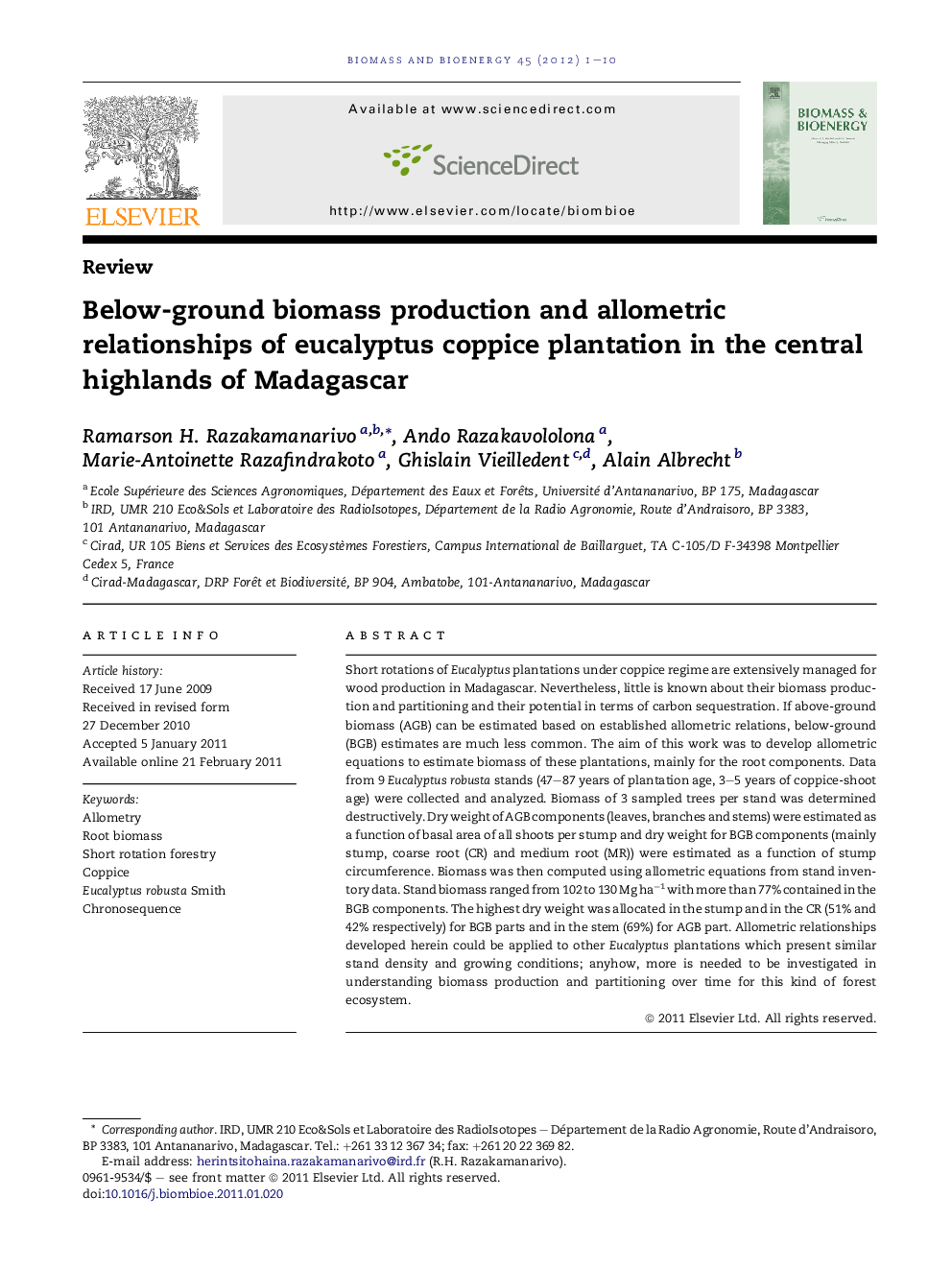| Article ID | Journal | Published Year | Pages | File Type |
|---|---|---|---|---|
| 677335 | Biomass and Bioenergy | 2012 | 10 Pages |
Short rotations of Eucalyptus plantations under coppice regime are extensively managed for wood production in Madagascar. Nevertheless, little is known about their biomass production and partitioning and their potential in terms of carbon sequestration. If above-ground biomass (AGB) can be estimated based on established allometric relations, below-ground (BGB) estimates are much less common. The aim of this work was to develop allometric equations to estimate biomass of these plantations, mainly for the root components. Data from 9 Eucalyptus robusta stands (47–87 years of plantation age, 3–5 years of coppice-shoot age) were collected and analyzed. Biomass of 3 sampled trees per stand was determined destructively. Dry weight of AGB components (leaves, branches and stems) were estimated as a function of basal area of all shoots per stump and dry weight for BGB components (mainly stump, coarse root (CR) and medium root (MR)) were estimated as a function of stump circumference. Biomass was then computed using allometric equations from stand inventory data. Stand biomass ranged from 102 to 130 Mg ha−1 with more than 77% contained in the BGB components. The highest dry weight was allocated in the stump and in the CR (51% and 42% respectively) for BGB parts and in the stem (69%) for AGB part. Allometric relationships developed herein could be applied to other Eucalyptus plantations which present similar stand density and growing conditions; anyhow, more is needed to be investigated in understanding biomass production and partitioning over time for this kind of forest ecosystem.
► We studied the potential of old eucalyptus coppices in Madagascar to mitigate global warming. ► Biomass measurement, mainly for below-ground BGB (stump, coarse-medium-and fine roots) was provided. ► BGB allometry relationships for short rotation forestry under coppice were established. ► BGB were found to be important with their 102-130MgC ha-1 (<77% of the C in the studied ecosystem). ► Importance of the study in a country like Madagascar for developing CDM and REDD activities.
